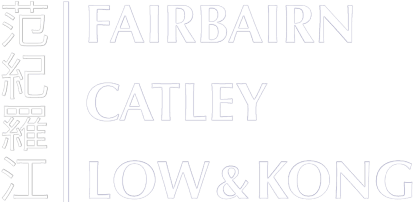締約各方在同一地點參與實體會議,以達成商業交易及簽訂交易文件,曾經是一種通行的做法,除非交易涉及多名位於不同區域的締約方導致進行實體會議不可行。然而,新冠疫情的後續影響和全球化改變了這種常態;個人和公司越來越依賴科技進行商業交易,以及簽訂交易文件。在此背景下,本行經常收到客户有關電子簽署在香港的法律效力和要求的法律查詢。
本文將探討電子簽署和數碼簽署在香港的法律效力。本文亦會探討接受電子簽署的文件和合約,以及其應用的例外情況。
《電子交易條例》(香港法例第553章)
《電子交易條例》(香港法例第553章)是規管電子簽署的主要條例。除某些例外情況外(請見下文‘電子簽署及數碼簽署應用的例外情況’部分),倘某些要求得以滿足,電子簽署及數碼簽署與文件上手寫簽署均具有同等法律效力。
電子簽署與數碼簽署
(一) 電子簽署
根據《電子交易條例》第2條的規定,電子簽署是指與電子紀錄相連的或在邏輯上相聯的數碼形式的任何字母、字樣、數目字或其他符號,而該等字母、字樣、數目字或其他符號是為認證或承認該紀錄的目的而簽立或採用的。
《電子交易條例》並無明文規定電子簽署需採用某一種形式或格式。以下是應用電子簽署的一些常見例子:
- 在電子郵件底部的簽名行上輸入姓名;
- 在合約上手寫簽署,然後把該合約掃描並儲存為PDF文件,再通過電子郵件將該PDF文件發送給合約的另一方;
- 在電子簽名板上簽署以批准信用卡交易;
- 通過電子簽署提供商(例如:Docusign和Adobesign)產生的簽署;及
- 傳真文件上的簽署。
倘若任何合約方不涉及政府單位或代表某政府單位行事,在遵守《電子交易條例》的規定的前提下,則電子簽署為有效及可執行。這些要求如下所示:
- 簽署方使用某方法使該電子簽署與某電子紀錄相連或在邏輯上相聯,以識別和顯示認證或承認包含於以該電子紀錄形式存在的該文件內的資訊;
- 就傳達包含於該文件內的資訊的目的而言,所使用的該方法是可靠和適當的;及
- 獲得提供簽署的一方同意簽署方使用該方法。
(二) 數碼簽署
根據《電子交易條例》第2條,數碼簽署指簽署人的電子簽署,而就其電子紀錄而言,該簽署是用非對稱密碼系統及雜湊函數將該電子紀錄作數據變換而產生的,使持有原本未經數據變換的電子紀錄及簽署人的公開密碼匙的人能據之確定 (i) 該數據變換是否用與簽署人的公開密碼匙對應的私人密碼匙產生的;及 (ii) 在產生數據變換之後,該原本的電子紀錄是否未經變更。
倘若合約的任何締約方為政府單位或代表政府單位行事,除電子簽署外,其他種類的簽署(包括手寫簽署及數碼簽署)均滿足任何有關簽署的法律要求。為免生疑問,非政府單位可使用電子簽署或數碼簽署進行交易。
根據《電子交易條例》第6(1A)條,數碼簽署必須是:
- 由認可認證機構頒發的認可證書證明的數碼簽署[1];
- 在該證書的有效期內產生的;及
- 按照該證書的條款使用。
接受電子簽署或數碼簽署的文件和合約
電子簽署或數碼簽署可用於大多數文件和合約。以下是一些例子:
(一) 簡單合約
一份簡單合約可以使用電子簽署方式簽名,前提是該份合約沒有規定與簽署形式有關的限制或要求,且該合約不屬於排除文件(定義見下文)清單內。
(二) 董事會會議紀錄及董事會書面決議
受限於公司章程細則,使用電子簽署方式簽名的董事會會議紀錄及書面決議一般均會被接受。值得注意的是,《公司條例》(香港法例第622章)第655(2)條訂明,公司紀錄可採用電子形式備存。
(三) 股東書面決議
與董事會書面決議相反,《公司條例》第560條明確規定,如果公司在任何載有或隨附被提出的書面決議的文件中,提供一個電子地址,須視為已同意任何關乎該決議的文件或資料,均可以電子方式送交該地址 (受制於該文件指明的條件或限制)。
電子簽署及數碼簽署應用的例外情況
儘管電子簽署和數碼簽署對於上述大多數合約和文件均有效,但是某些文件必須以手寫簽署而非電子方式簽訂。這些排除文件(「排除文件」)載列於《電子交易條例》的附表1中,其中包括但不限於以下文件:
- 遺囑、遺囑更改附件或任何其他遺囑性質的文書;
- 授權書;
- 誓言及誓章;
- 法定聲明;
- 信託(歸復信託、默示信託及法律構定信託除外);
- 政府的批地協議及條件及政府租契;
- 《土地註冊條例》( 香港法例第 128 章 ) 第 2A 條提述的達成浮動押記的文件;
- 《土地註冊條例》提述的會影響香港的任何一幅地、物業單位或處所的契據、轉易契、其他書面形式的文件或文書、判決及待決案件;
- 訂立、簽立或訂立及簽立根據《印花稅條例》(香港法例第117章)須加蓋印花或加以簽註的文書,該條例第5A條所指的協議所關乎的成交單據除外;
- 《物業轉易及財產條例》(香港法例第219章)所指的任何轉讓、轉讓契、按揭或法定押記,任何其他關乎不動產或不動產權益的處置的合約,或任何其他達成該等處置的合約;
- 可流轉票據(但不包括註有“not negotiable”字樣的支票)。
總結
在遵守所有適用法律的前提下,使用電子簽署可以顯著地簡化商業交易。儘管非政府單位可以彈性地選擇採用電子簽署和數碼簽署方式簽訂合約和文件,但是政府單位不能採用電子簽署簽訂合約和文件,而需用數碼簽署或手寫簽署等其他形式簽署。最重要的是,在使用電子方式簽署文件之前應確保擬簽訂的文件或合約並非屬於排除文件。
如對本文有任何疑問,請聯絡本行的團隊。我們非常樂意向您提供協助。
[1] 截至本文發表之日,香港有兩間認可核證機關:(1) 香港郵政核證機關;及 (2) 電子核證服務有限公司。


